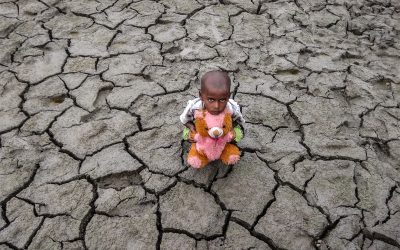Wikipedia answers me this way: “Earth Day is the name used to refer to the day on which we celebrate the environment and the conservation of planet Earth.”
This definition is not what I am looking for; I need an analogy with something familiar. To simplify things, I have decided to see this day as the “Earth’s birthday“. A special birthday, a birthday in quarantine, without concerts, parties, hugs or barbecues.
The exceptional situation is due to the outbreak and spread of the COVID-19 virus, until now the greatest socio-economic threat since the Second World War. But what we perceive as a virus, what is it for the Earth?
Until a few months ago, streets, squares, monuments and landscapes used to appear in apnea, overwhelmed by cars and people. What remains now is a puzzle of empty and soft pictures, as if floating; the unhealthy air that surrounded these places is now limpid and clean, and the orchestra of car horns, screams and noises in the background has been replaced by quiet and silence. The Earth wakes up on its most free and healthy birthday. At this point, COVID-19 appears to be an antibody developed by the Earth itself to fight the spreading, now at an advanced stage, of the real virus for her: Us.
After these considerations, the meaning of Earth Day begins to assume a shape in my mind. The analogy evolves, moving from a birthday to a recurrence comparable to the International Women’s Day, a celebration dedicated to something that for a long time has been exploited and taken for granted; something essential, vital, necessary, but fragile and unprotected by its nature. The Day then becomes a moment of reflection and awareness, an opportunity to reconsider our behaviour and our choices.
I still find similarities between these two days. They were both born in the United States and recognized and officialized by the UN. They have both led to legislative and social progress. They are both associated with global movements: feminism and environmentalism. They have both led to manifestations (peaceful and non-peaceful).
For the Earth Day, the manifestation is both daughter and mother. In 1969, the Democratic Senator of Wisconsin Gaylord Nelson invited all citizens to participate in a nationwide environmental event which, on April 22, 1970, brought 20 million people to the streets of the United States and saw the New York’s Fifth Avenue flooded by a crowd of over 100,000 people. A small, first step towards the preservation of the Earth’s rights, which led to the approval of 28 environmental reforms. An extraordinary success that persists until today and that every year involves people from all over the world.
Today there will be no manifestations or concerts, but there will still be time to reflect; to reflect on what we are doing for the Earth’s safety and what we can still do.
My mind finally comes back to the analogy with International Women’s Day; the Earth assumes the form of a woman who is exhausted by the weight of our mistakes, but who still preserves her beauty despite her struggles. We have the right and the power to safeguard this treasure.
A mimosa is not enough.
Andrea Marincola
Member of Kukula
Healthy Land, Healthy People
Photo: Avijit Ghosh - Future Without Green...
World food safety day
Today is the second anniversary of the World...
A living planet
Today, 22nd May, is the International Day for...




